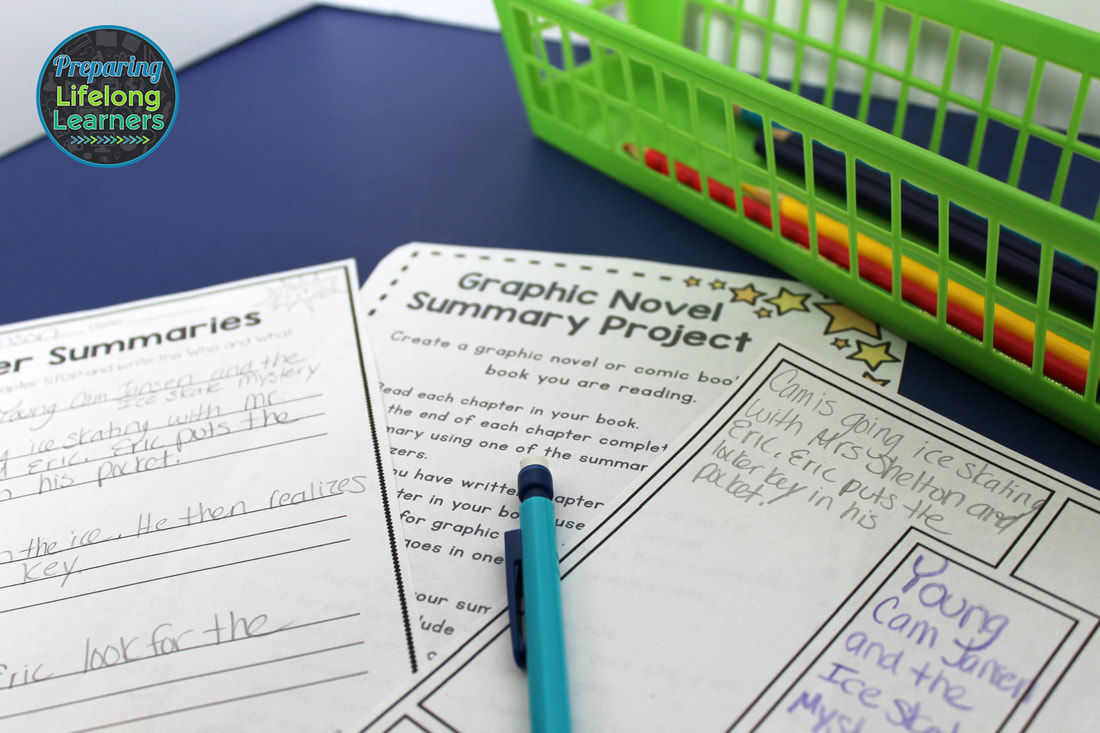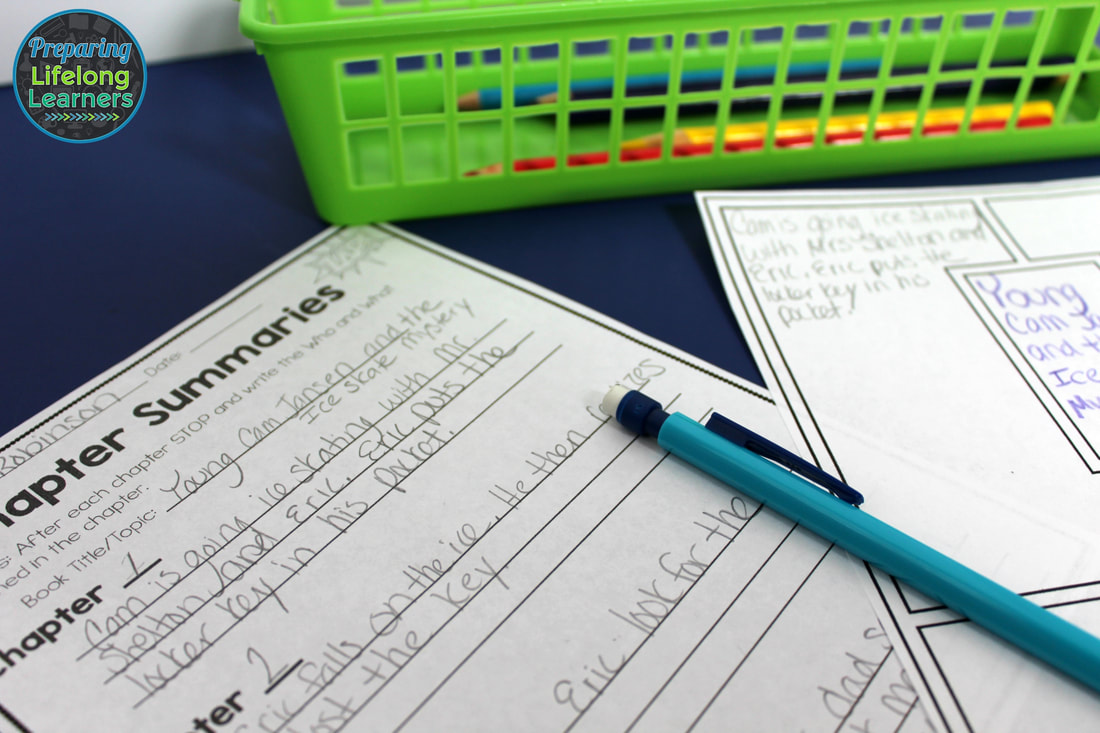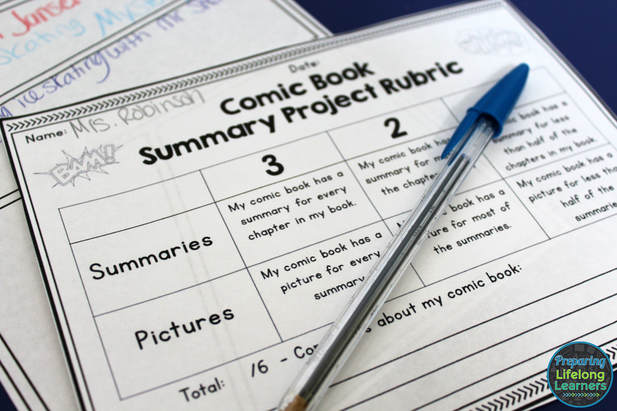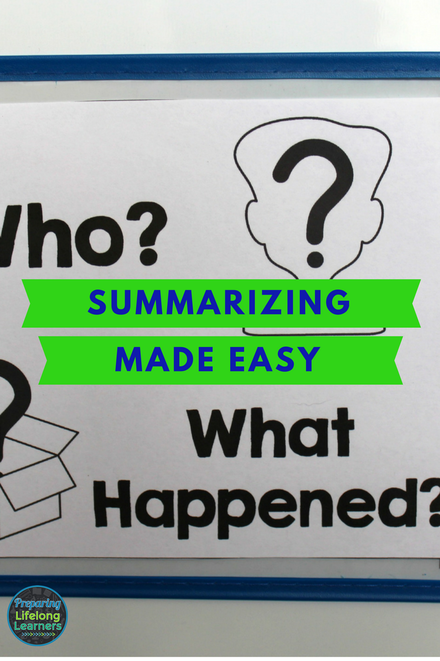|
We worked on a super fun project at the end of last year and I just want to take a few minutes to tell you about it. The students in my reading groups had so much fun they even took it home (I think that is saying a lot when you look at the population of students I work with!). Comic book or Graphic Novel Summary Books! The idea behind comic book/graphic novel summaries is pretty simple. The students get to read a chapter book and then turn it into a graphic novel (which are all the rage at my school with our 4th and 5th grade students!). It's super engaging, yet acts like a book report! Here how we make them! First the students read a chapter book. We used assigned books for our first time, but after that the groups got to choose a book (just like in a traditional book club). At the end of each chapter the students stop and jot a summary of the chapter. We use a graphic organizer to keep track of those summaries. We also use a strategy called Who? What Happened? to help with summaries. Take a look at this blog post if you need a summary writing strategy. After they have written all of their chapter summaries (completed reading the book), they then pick out graphic novel pages (making sure to have enough boxes for each chapter, or more if they want to add things in), and write one summary per box. They also include pictures to go along with the summary. It is a quick and easy way to complete a project about the chapter books we are reading! We've used this project a few times in class and I've learned a few things.....
I also created a rubric for quick and easy grading. In my intervention groups we don't do actual grades, so I just use Outstanding, Satisfactory, or Needs Improvement. But, you can customize the rubric to meet your needs! This project is super fun and my students love completing it! Win-Win! Interested in trying this project with your students? Check out my Teachers Pay Teachers page!
2 Comments
Need help teaching summarizing? It's that thing that we expect all upper elementary students to do, but what if they can't? As an intervention teacher I primarily work with students that struggle, and boy do they struggle with a summary. They either write the entire thing down (sometimes trying to copy word for word), or they start listing random facts and I'm like WHAT?? Did we just read the same thing? When students first start groups with me we begin working on two things. Their working memory, and summarizing. To be honest, I can't take full credit for this summarizing tip. Last year I had a group of students really struggling with remembering anything we read. They could get 100% on a running record, but not be able to tell me the main characters name. So, I turned to the reading guru herself Jan Richardson and emailed her a question. Well, amazing lady that she is, she emailed me back this great idea that I turned into a strategy we always use! It helps both comprehension and summarizing! It's called Who? What Happened? We begin with very small sections, a page or a paragraph, depending on what they are reading and what their reading level is. At the end of every section the students stop and think (or say to a partner) Who was on the page and what just happened on the page. To introduce any strategy in our groups we use the gradual release strategy. First I model the strategy, then we work on the strategy together and then gradually the students use the strategy on their own. This is an amazingly simple, yet effective, strategy to help students not only increase their working memory, but also work on the foundations to comprehension.
If you are interested in using this strategy with your students and want the quick and easy anchor chart just click on the picture above or click HERE to download it. |
MEET JENI'm a mom, wife, and teacher that loves to read, hang out with my family, and learn. I love to use our blog to share ideas with others and to help keep me learning!
Categories
All
Archives
December 2021
|










 RSS Feed
RSS Feed